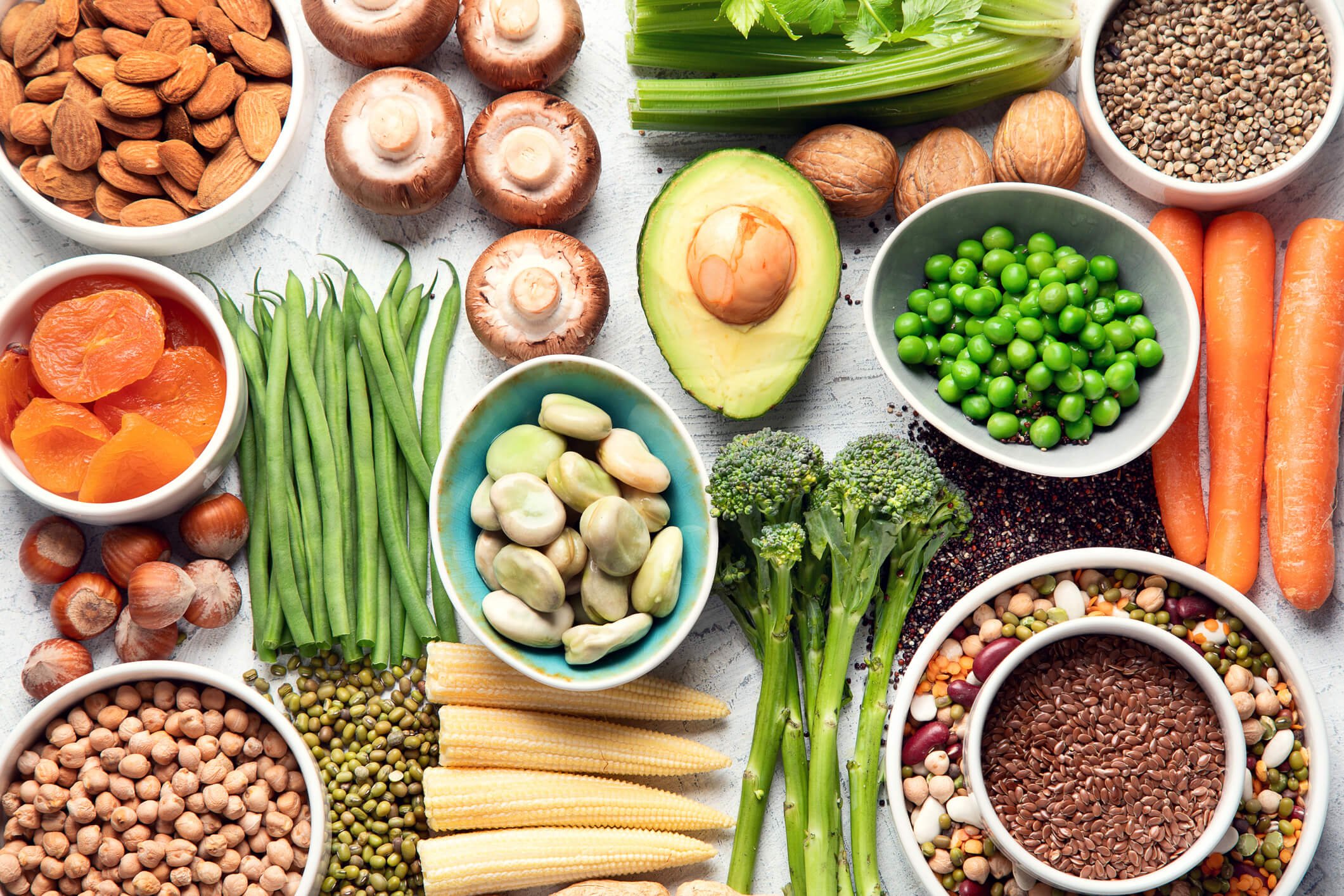“But where do vegans get their protein?”
Anyone who adopts a plant-based diet or even considers going plant-based is likely to hear some variation of this question with alarming frequency.
You don’t have to look far to see what can sometimes border on protein obsession, especially in the Western world. From protein shakes, bars, and powders to cereals, cookies, and protein-focused diets or meal-delivery services, a high level of attention to protein seems to be just about everywhere.
But is all this attention to protein warranted? How much protein do we really need? Is it actually possible that some people could be getting too much protein? Is animal protein really better, as many people believe — or might it actually be better to get it from plants? And what are the best plant-based protein sources?
Let’s take a look.
Is Protein Necessary?
Yes. Protein is something you need to eat every day. Why? Because your body doesn’t store it the way it stores fats and carbs — the other two main “macronutrients” in food. In a pinch, if you’re not getting enough protein from food, your body can also take amino acids from your muscles (but that kind of defeats the purpose).
OK, but what is protein?
Protein is an essential nutrient for the building, maintenance, and repair of almost all the tissues in your body, including your bones, muscles, blood, hair, nails, and organs.
Protein also gives your body energy, although that’s not its main role. In addition, protein helps keep your immune system strong (because proteins are a component of your immune system). And, eating protein can help keep you feeling full longer.
What we call protein is made up of 21 amino acids. Your body can make 12 of them, but there are 9 that are called the “essential” amino acids because you need to get them directly from your food.
As long as you’re eating a variety of whole, natural foods and getting enough total calories and enough overall protein, you should meet your needs for all nine essential amino acids. The notion that you need to combine foods (especially plant-based foods) in order to get the right balance of amino acids, also referred to as complete proteins, is a myth.
https://www.youtube.com/watch?v=Fhyfa48bK28
Types of Protein: Animal vs Plant Protein

It’s also a myth that protein from meat is a better protein source than vegan or plant-based protein. Although the meat and dairy industries like to make it sound like animal protein is the prize protein for your body, science doesn’t back up this claim. It turns out that the source of your protein matters. And you might be surprised to learn that animal-sourced protein may actually be inferior to plant-sourced protein.
In a 2018 study published in the International Journal of Epidemiology, researchers followed 81,337 participants for 6–12 years. The researchers looked at the percentage of protein that came from animal and plant sources for these participants. What they found was that the risk of cardiovascular death steadily climbed with higher consumption of meat protein — but fell steadily with increased consumption of protein from nuts and seeds.
In addition, a 2003 research review published in The American Journal of Clinical Nutrition confirmed that diets lower in meat consumption led to greater longevity.
The researchers also noted that the longer a person’s adherence to a plant-strong diet, the lower their risk of mortality and the higher their life expectancy.
At least one of the reasons may have to do with insulin-like growth factor (IGF-1). Research suggests that animal protein, in particular, causes higher levels of IGF-1, which may increase your risk of cancer and many age-related diseases.
How Much Protein do You Need?
In the US, the official recommended dietary allowance of protein is 56 grams for adult men and 46 grams for adult women — using average referenced body weights. Your individual needs may vary, however, according to your weight, age, pregnancy or lactation status, and physical activity. The National Institutes of Health suggest 0.36 grams of protein for every pound of body weight. That means, at 150 pounds, you’d need about 54 grams of protein per day to meet this target.
If you’re an athlete who is trying to build muscle, if you’re pregnant or lactating, or if you’re under exceptional emotional stress, the recommendation is to get at least 0.45 grams of protein daily per pound of body weight (which means, at 150 pounds, you’d need about 67.5 grams of protein daily).
Newer research is finding that older adults tend not to absorb protein as efficiently, nor eat as much, so as a result seniors may also need more protein.
The Mayo Clinic recommends that anyone over age 65 should get between 0.44 and 0.52 grams of daily protein per pound of body weight. (This means a senior who weighs 150 pounds might need 66–78 grams of protein per day.)
Here’s a chart that can help you assess your protein needs. It was developed by New York Times best-selling author and Food Revolution Summit speaker, Kris Carr:
Your Protein Needs*1. Find your “P” value. 2. To calculate your protein needs, multiply your lean body weight (in pounds) by your “P” value to find out how many grams of protein are recommended for you each day. (If you are significantly overweight, you may adjust the formula down to base it on what you might consider a healthy body weight.) *Based on the available research, these suggestions are intended for general health, disease prevention, and longevity. But for specific contexts, such as power athletes and weightlifters, there is also research showing that higher protein intakes may be advisable in some instances. Also, we are each biochemically and metabolically unique, so listen to your body, use your own best judgment and, wherever applicable, consult with your health care provider for guidance. |
A Note About Plant-Based Protein Absorption and Fiber
Although plant-based protein appears to be generally healthier than animal protein, its digestibility and bioavailability can be hampered by the fact that it’s generally accompanied by fiber. Fiber is critical to maintaining gut health, as well as preventing a number of medical conditions. But as fiber sweeps out materials in the intestine, it carries a small amount of protein with it. As a result, protein digestibility on a plant-based diet can end up being about 10% less than on a more meat-based diet. Therefore, some dietitians recommend adding 10% more protein to calculated needs based on the standard RDAs for protein.
This is not as much of a concern if you consume relatively low-fiber, high-protein plant foods such as meat analogues and tofu on a regular basis. Or if you occasionally consume animal products. But if you’re meeting or exceeding your recommended fiber intake, as many plant-based eaters eventually do, you may want to aim for slightly more protein to compensate.
Protein Deficiency is Shockingly Rare
In 2022, The NPD Group reported that 41% of US consumers said they wanted more protein in their diet. But do they need it?
This may come as a surprise, but protein deficiency is virtually nonexistent in industrialized countries.
Most American adults eat substantially more than the recommended amount — averaging more than 100 grams of protein per day. And most Europeans get more than they need, too.
If you’re eating enough food so you don’t lose weight, and you’re eating a variety of whole foods, it’s almost impossible to consume too little protein.
In general, the only people who are truly deficient in protein are those who aren’t eating enough calories — which is a serious and potentially life-threatening concern for hundreds of millions of people on the planet who don’t have enough food to eat.
Protein deficiency can also become a problem for “junk food vegans” who eat no animal products and a lot of processed foods. There’s no protein in sugar or bottled oils and very little in fries or chips. And protein deficiency can also be a problem for alcoholics, people with eating disorders such as anorexia, and drug addicts — all of whom tend to have diets that are deficient in many important nutrients.
But with these exceptions, in the industrialized world, where starvation is relatively rare, inadequate protein consumption is almost unheard of. If you eat 2,400 calories in a day and 15% of your calories are coming from protein, you’ll be eating 90 grams of protein.
In fact, as surprising as it may sound, we’re beginning to understand that far more people may be suffering from getting too much protein than from getting too little. (More on that coming soon.)
Does Protein Make You Lean and Strong?

The right amount of the right protein will help you be healthy, but what about the claims that extra protein intake is needed to build muscle and help to release excess weight?
And for weight loss, it’s true that protein can help reduce hunger, boost metabolism, and reduce cravings, but as you’ll see, eating too much protein has additional health downsides that make it an undesirable weight loss strategy.
How Much Protein Is too Much?
When you consume more protein than your body needs, it isn’t stored as protein. Instead, it’s converted to fat or eliminated through your kidneys, which contributes to osteoporosis and kidney stones.
And that’s not the only problem too much protein can cause. When the International Scholarly Research Network published a meta-analysis of 31 studies on protein intake and disease, it concluded that overconsumption of protein was associated with higher rates of cancer, osteoporosis, renal disease, disorders of liver function, and coronary artery disease.
In some of the most important nutritional research conducted in recent years, Valter Longo, PhD, director of the Longevity Institute at the University of Southern California, and his team published a study in Cell Metabolism in 2014 that tracked 6,381 adults over the age of 50 for nearly 20 years.
The study found that between the ages of 50 and 65, participants who ate a high-protein diet (defined as 20% or more of calories coming from protein) were four times more likely to die of cancer than those who consumed a low-protein diet (with less than 10% of calories coming from protein).
The increase in cancer risk associated with a high-protein diet during these years was on par with smoking 20 cigarettes per day!
Once over the age of 65, however, cancer mortality data leveled off, indicating that for people over age 65, there is no meaningful cancer-fighting benefit to a low-protein diet. At each age, however, those participants who ate a high-protein diet had a five-time greater risk of mortality from type 2 diabetes.
Overall, the study found that people with a high-protein diet were 74% more likely to die of any cause within the 20-year study period than their low-protein counterparts.
What if we’ve had it all backward? Is it really possible that most of us are actually getting too much protein?
Dr. Longo thinks so. Summarizing the findings, he concluded that the study provided “convincing evidence that a high-protein diet — particularly if the proteins are derived from animals — is nearly as bad as smoking for your health.”
However, according to the study’s findings, the negative health associations of eating too much protein were reduced or eliminated if the protein came from plants.
What if You Want More Protein?

If you want to boost your protein levels for any reason, there are good reasons to aim for plant-based sources. Shelled seeds (hemp, flax, and chia seeds are excellent), or seeds that have been ground into a powder, are excellent protein sources.
What about using more refined protein supplements to add protein to your diet? That may not be the best idea. In 2018, the Clean Label Project tested the most popular protein powders on the market. They found that virtually all of the 134 protein powder products tested contained detectable levels of at least one heavy metal, and 55% tested positive for BPA.
Strangely, the plant-based and organic protein powders were not exempt from these problems — and in many cases actually fared worse.
Many of the protein powders on the market also contain additional sweeteners, flavorings, fillers, preservatives, and gums. And conventional protein supplements are often made with whey, a dairy protein, which is a byproduct of the cheesemaking process.
But the good news is, so long as you eat a varied diet based around whole foods and get enough total calories, chances are you have no need for protein supplements anyway.
14 Delicious, Plant-Powered, High-Protein Foods
There’s a widespread myth that only animal foods provide “high quality” proteins. But in reality, many plant-based and vegan protein sources contain abundant, health-promoting protein. For example, some of the best vegan protein sources are beans and legumes. And the percentage of calories coming from protein in tempeh, tofu, or green lentils is actually higher than in bacon or in cow’s milk.
If you want to get enough protein, here are some potent plant-based protein sources:
1. Organic Tempeh – (1/2 cup, cooked): 16 grams of protein

This fermented soy food has loads of plant protein. Try it as a substitute for bacon on a BLT, chopped up on a tasty salad, or in a stir-fry with some colorful veggies. Tempeh also makes a great addition to chili. Just make sure to opt for organic varieties of tempeh to avoid GMO soy.
2. Lentils – (1 cup, cooked): 18 grams of protein
Lentils are a delicious addition to many meals, and at an average of under $4 per pound (before cooking), they’re a pretty affordable source of protein, too!
Try red, green, brown, yellow, or black lentils — and add them to a power bowl, make lentil soup, or incorporate them into burritos or tacos.
3. Organic Edamame – (1 cup, cooked): 17 grams of protein
This Asian staple is soy in its most natural state. And it can be quite easy to fall in love with it!
Eat edamame out of the shell, wrapped up in summer rolls, or as a regular protein source in your salad rotation. Just be sure to look for organic varieties to avoid GMO soy.
4. Chickpeas – (1 cup, cooked): 16 grams of protein
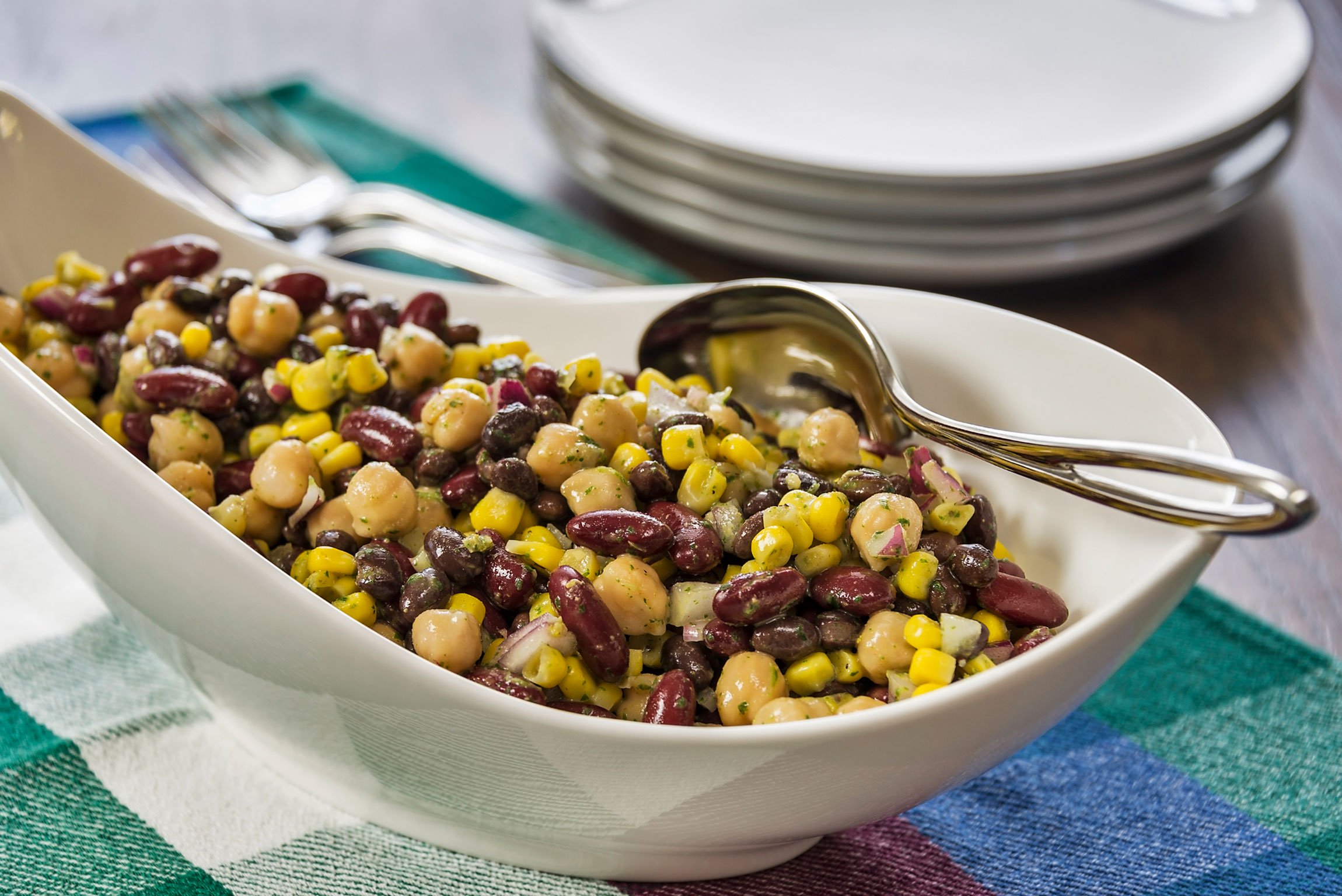
Also known as garbanzo beans, chickpeas are highly satisfying. They’re also the main ingredient in one of my favorite spreads: hummus!
Try adding chickpeas to salads and bowls, or roast them for a crispy, on-the-go treat.
5. Black Beans – (1 cup, cooked): 12 grams of protein
Chow down on these protein-rich beans any time of the day.
Combine them with whole grains for a protein-packed combo, turn them into a spread, or whip them up into a nourishing soup.
6. Hemp Seeds – (3 tablespoons): 10 grams of protein
These tiny little seeds pack a powerful dietary punch; they’re rich in plant protein as well as omega-3 fatty acids.
Small but mighty, hemp seeds are great in smoothies and bowls or sprinkled on salads. Instead of adding protein powder to your smoothies, try adding a scoop of hemp seeds.
7. Quinoa – (1 cup, cooked): 9 grams of protein

This increasingly popular seed (yes, it’s technically a seed — not a grain, though it cooks and tastes like a grain) seems to be on menus everywhere these days.
Try quinoa instead of rice in plant-based sushi, use it as a base for bowls, or even use it to make a quiche.
8. Organic Extra-Firm Tofu – (3 oz): 9 grams of protein
If you’re not a fan of tofu — you probably just haven’t found your favorite way to eat it. The possibilities are almost endless with this ancient plant-based protein staple.
Try the extra-firm tofu variety in stir-fries, marinate it in your favorite sauce, bake it, or plop it in a soup. And like edamame, opt for organic varieties of tofu to avoid GMO soy.
9. Almonds – (1/4 cup, raw): 8 grams of protein
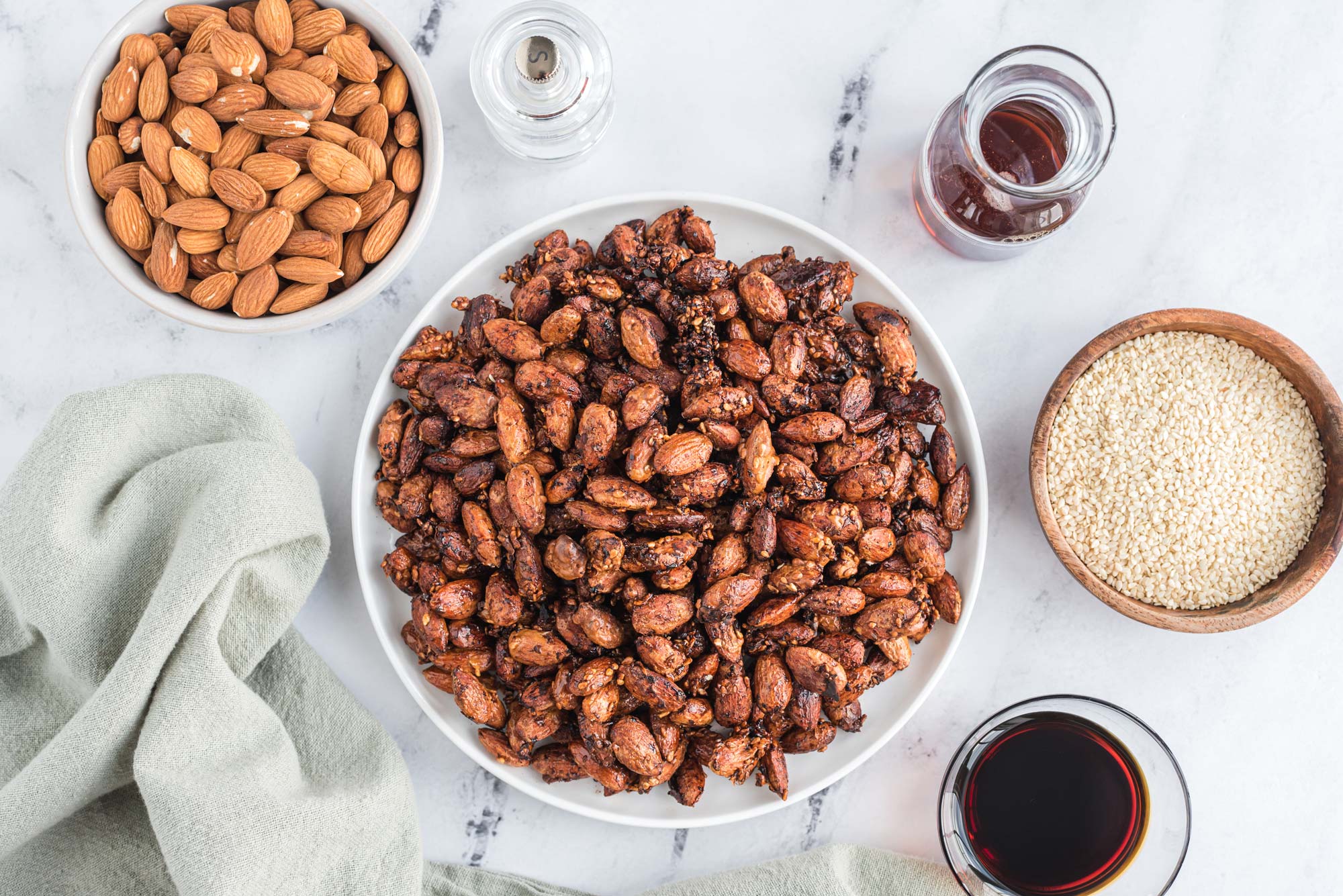
A perfect on-the-go snack, almonds are high in healthy fats and other good-for-you ingredients, including fiber, magnesium, and B vitamins.
Eat almonds on their own, smother almond butter on sandwiches or apples, or chop them up and add them as a crunchy addition to your favorite dish.
10. Sunflower Seeds – (1/4 cup, raw): 7 grams of protein
These little seeds have plant-based protein superpowers!
Try sunflower seeds on their own, sprinkled on salads or zoodle dishes, or even made into sunflower seed butter.
11. Oats – (1 cup, cooked): 6 grams of protein
Not just for breakfast anymore, oats can be included in so many recipes!
Make some overnight oats, try sweet or savory oatmeal, throw some into your smoothie, or make oat waffles.
12. Broccoli – (1 cup, cooked): 6 grams of protein
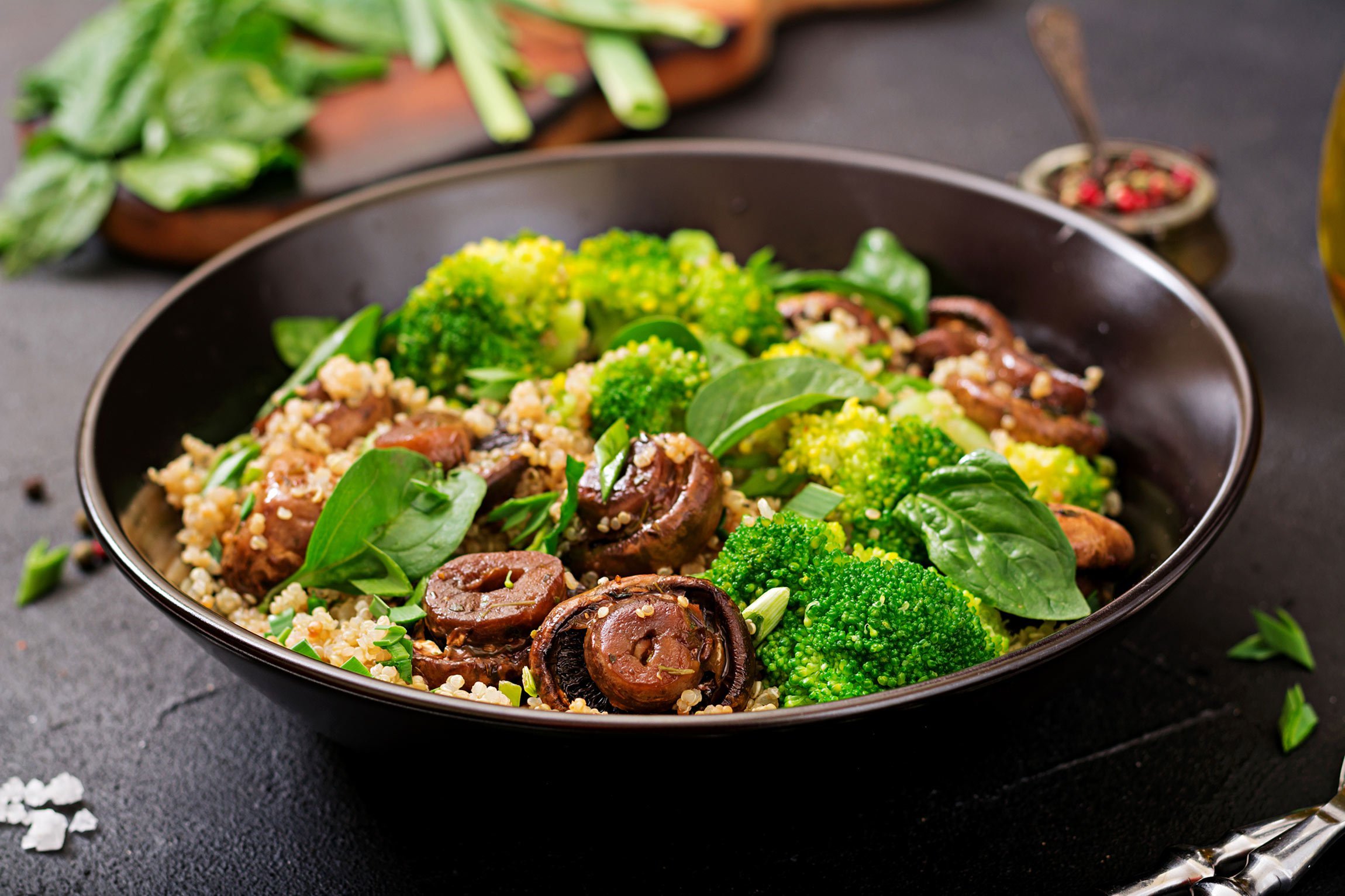
Broccoli is a healthy cruciferous vegetable — and also a surprisingly good source of protein.
Add it to salads, make it into soup, sauté it, or add it to a grain bowl for a protein-packed dish.
13. Chia Seeds – (2 tablespoons): 6 grams of protein
Ch-ch-ch-chia! Sound familiar? For many folks, their only experience with chia seeds growing up may have been via the infamous Chia Pets. But these teeny little seeds are now becoming an increasingly popular superfood because of their high protein, fiber, and omega-3 fatty acid content.
Make a chia seed pudding, use chia seeds in smoothies, or add them to salads and oatmeal. And here’s an important tip: Like flaxseeds, it’s best to grind your chia seeds to make sure you absorb the most nutrients possible.
14. Pumpkin Seeds – (1 oz, cooked): 4 grams of protein
For many people, roasting fresh pumpkin seeds from a jack-o’-lantern is a fun (and delicious) fall activity. But even if it’s off-season, you can buy these hearty seeds (also known as “pepitas”) almost anywhere.
Eat them as a snack when you travel, throw them on top of salads and bowls, or whip them into a hummus or other dip.
Plant-Based Protein Recipes
Getting the protein your body needs is much easier than you think! The wonderful thing about having an abundance of plants in your diet is that protein is found in many plant foods (as you have learned), especially nuts, seeds, beans, legumes, and whole grains. When you combine these into satisfying plant-diverse meals you’ll never need to question, “Am I getting enough protein?” again.
Omega Baked Oatmeal is filled with fiber, protein, and omega-3-rich flax, hemp, and chia seeds. Chickpea Quinoa Salad is light, refreshing, and loaded with plant-based nutrients. Plus, this tasty meal packs in a significant amount of protein to keep you satisfied all afternoon. Buckwheat, Tofu, and Broccoli Curry is a one-stop shop for flavor and texture galore with the creamy coconut milk and fragrant curry. It also takes satiety to the next level with the protein-rich blend of chewy buckwheat and baked tofu.
Enjoy these meals together as a protein-rich meal plan or spread them throughout the week to be incorporated with your favorite plant-based recipes.
1. Omega Baked Oatmeal
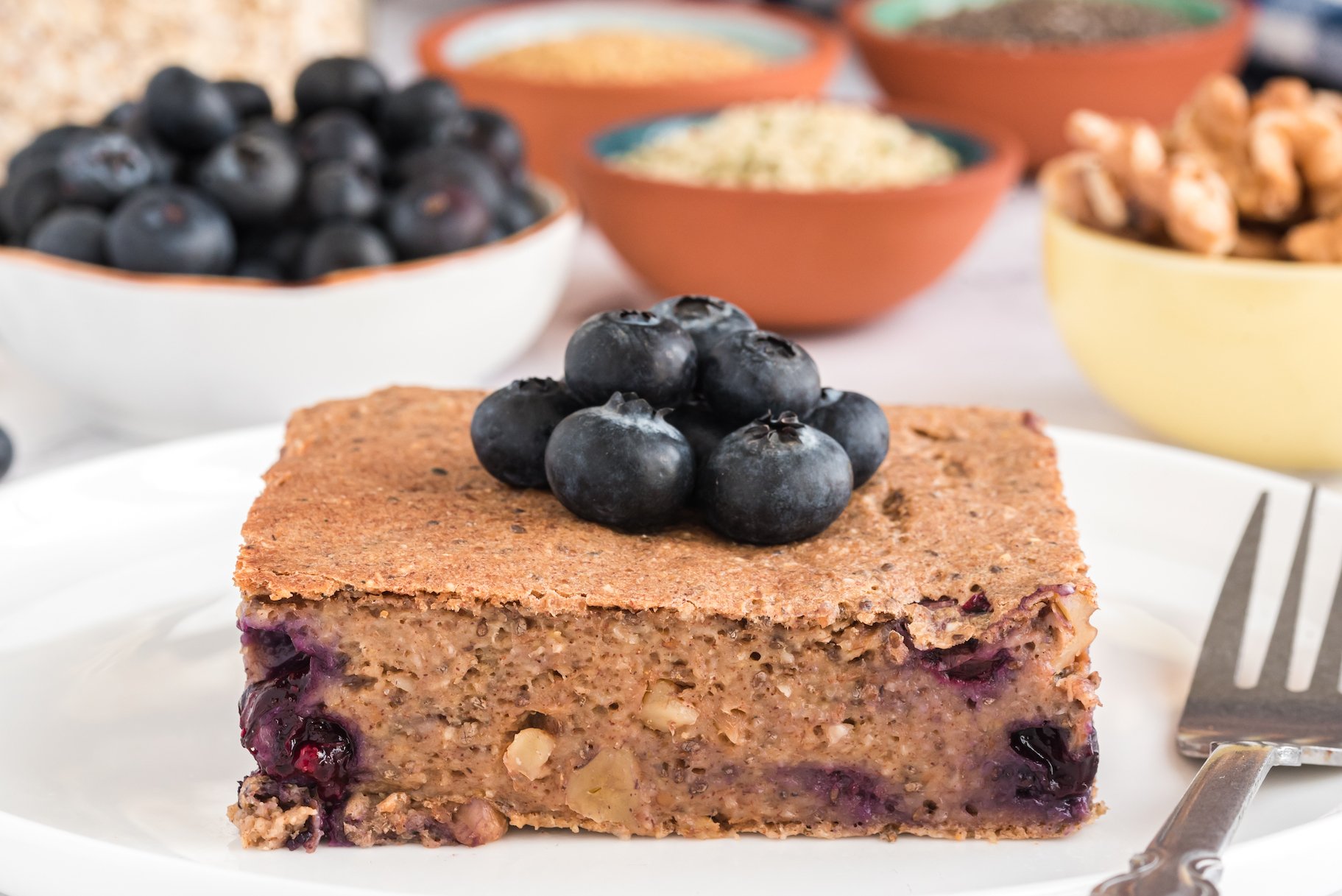
Nothing is more comforting than a hearty bowl of oatmeal, especially when you add even more wholesome, healing ingredients to it. Omega Baked Oatmeal has no shortage of superfoods to fuel you for a sunshiny day. Omega-3-rich flax, hemp, and chia seeds are full of heart-healthy fats and plant-powered protein. And let’s not forget about our beloved rolled oats, which are an excellent source of fiber as well as, you guessed it — protein! When paired together, this hearty bake provides you with 12 grams of protein per serving. This nutrient-packed baked oatmeal is a great way to start your morning. It’s truly the breakfast of champions!
2. Chickpea Quinoa Salad

Chickpeas are among the plant-based protein all-stars (along with lentils and other legumes). Bonus that they’re fiber-rich and super tasty, too! Chickpea Quinoa Salad is assured to become one of your favorite lunchtime staples. Chickpeas, fresh herbs, nutty quinoa, and peppery arugula come together for a delightful salad that delivers 18 grams of protein per serving. Now that’s a salad!
3. Buckwheat, Tofu, and Broccoli Curry
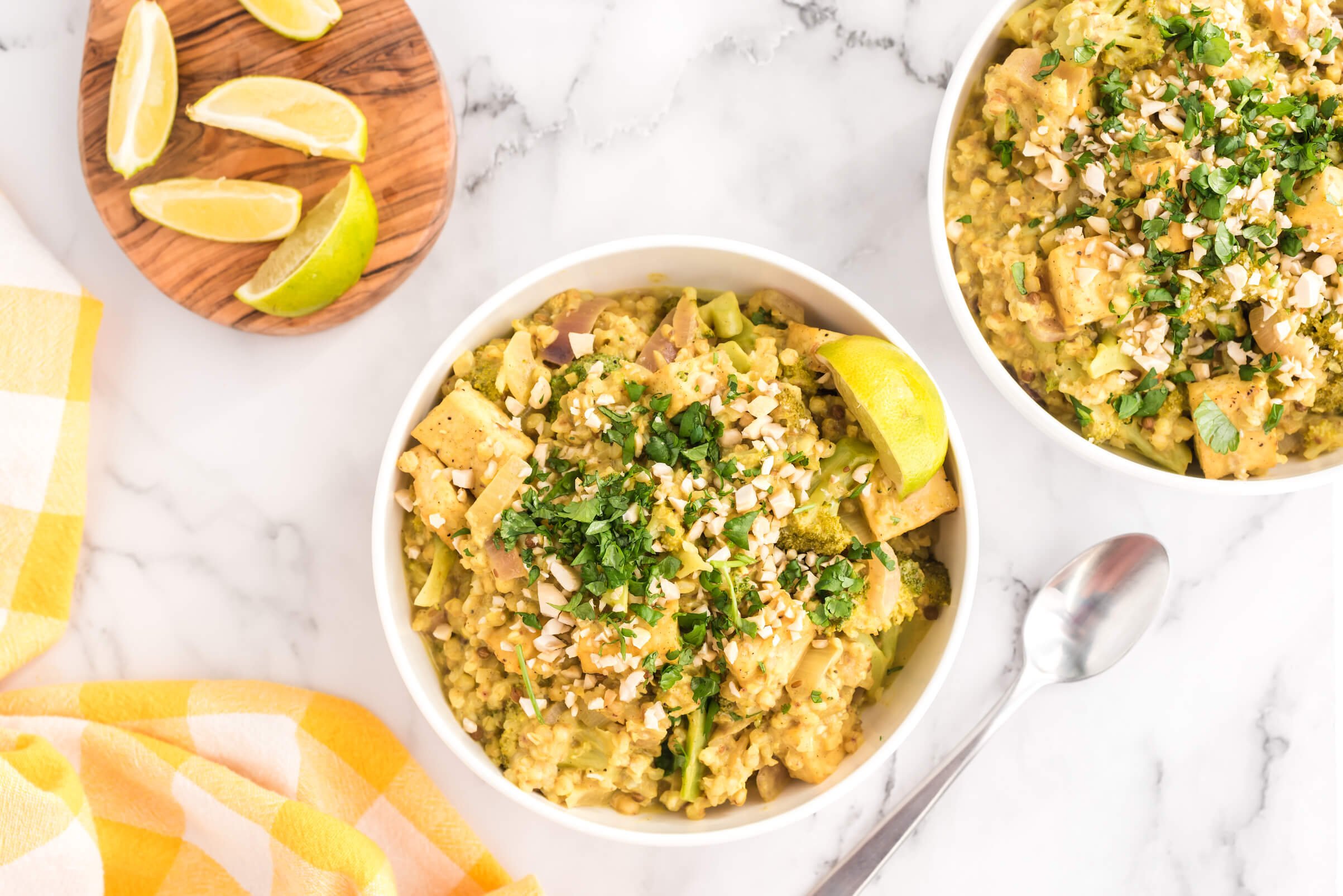
Hearty, satisfying, and invigorating thanks to curry spices, plant-based protein, chewy buckwheat, and crunchy broccoli, this dish delivers flavor, texture, and nutrition. This wholesome curry bowl is packed with 37 grams of protein per serving! Fun fact about buckwheat: It’s actually a cousin of rhubarb, so it’s not technically a grain at all. But its nutrients, high protein content, nutty flavor, and appearance have allowed it to be classified as one. The next time someone asks, “Where do you get your protein?” share this tasty, protein-powered recipe with them!
The Best Protein Is from Plants!
Protein is essential for your body. But if you want to stay well and avoid disease, it’s best to source most of your protein from plants. Luckily, the plant kingdom makes it easy. You can get the protein you need from a variety of garden-grown goodness every day.
Tell us in the comments:
- Does this change the way you think about protein?
- What are your favorite plant-based protein sources?
Featured Image: iStock.com/Rimma_Bondarenko
